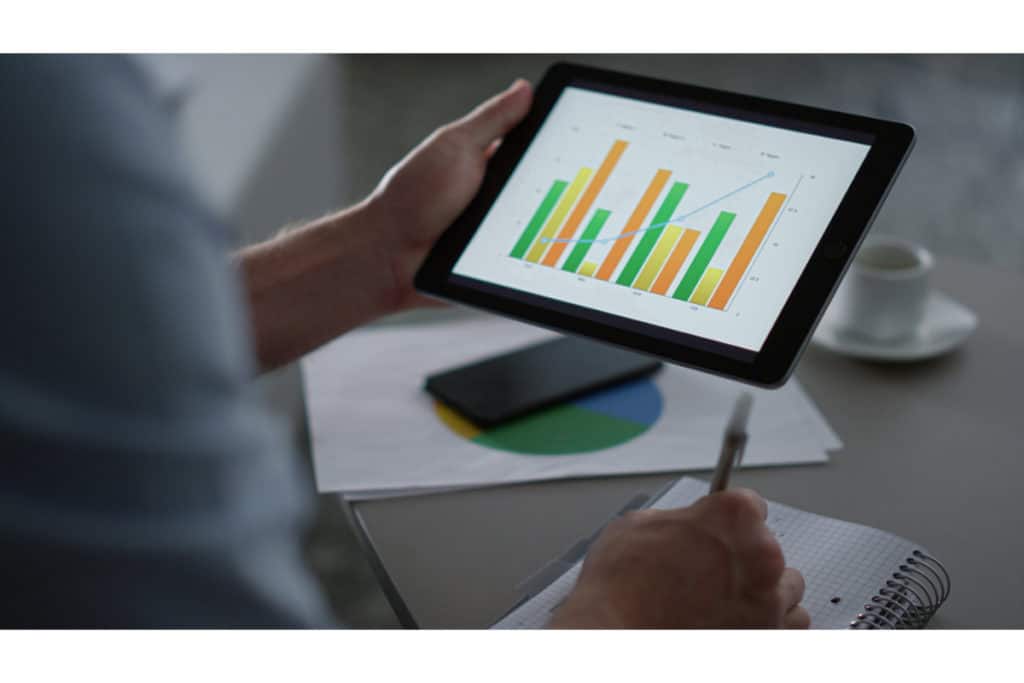Traditional marketing was limited to the formula: selling through advertising. From this concept, many strategies emerged, such as newsletters, banners and mobile campaigns. The philosophy of repeated canvassing has been deeply rooted in the minds of marketers and has led to a general feeling of frustration. Consumers have become insensitive and have embraced new habits. They instinctively turn off ads, ignore emails and shun banners. It is in this paradoxical context that slow marketing has emerged. Discover the principles that have forged this mindset.
What is slow marketing?
The slow trend goes against the grain of an overheated society. This movement has given rise to slow marketing, a way of thinking that focuses on slowing down.
A strategy derived from the slow stream
The slow movement came on the scene in the 1980s. In an anxiety-inducing atmosphere, its initial aim was to combat the stress that was consuming the public. Since its appearance, this philosophy of life has gained many followers.
The trend has given rise to a variety of variations: slow food, slow life, slow tourism and, in the context of advertising campaigns, slow marketing. As its name suggests, it slows down the pace of advertising production. It abandons mass advertising and moves towards targeting and personalisation of messages.
Also read: How to make an SMS campaign on Wordpress?
Slow marketing: an opportunity to question ourselves
Slow marketing is the start of a thorough review of your communication programme. It encourages analysis and reflection. It makes use ofinbound marketing techniques. As a reminder, inbound marketing is the art of creating content toattract customers to your brand, a strategy that is true to slow thinking.
Global awareness, patience and perseverance are the watchwords of slow marketing. Its adoption ensures a lasting result.
The approach to sustainable communication is based on 3 pillars:
- communicating the value of your brand;
- affirming your potential ;
- mobilising communication efforts.
These elements bring together the ingredients of a successful marketing action.
Slow marketing: a cutting-edge technique
The approach is the solution to overconsumption and overproduction. It adapts to the circumstances and invites behavioural change.
It values original content in homeopathic doses. It refuses commercial canvassing and prefers a sincere and profound message that makes an impression on the audience.
Its purpose is to embed your brand in the hearts of consumers over the long term.
Start slow marketing in the best conditions
Adopting slow marketing can be confusing at first. Here are the basics for a smooth start.
Knowing the customer inside out
Marketers tend to stereotype customers. They flood advertisements with clichés and drown consumers in the popular mass. However, knowing the targets helps you to build an effective and sustainable strategy.
The knowledge of targets raises 2 techniques: the buyer persona andconsumer insight. The buyer persona or marketing personas humanises each target by giving it a fictional identity. It invents demographic, biographical and psychological information (surname, first name, address, age, profession, status, history, etc.) for each person who makes up your audience.
It is developed in the field. Meet your prospects. Organise focus groups to share information. The contact helps you to understand their perception, understand their point of view and demystify their need.
Consumer insight is a predominant thought, behaviour or opinion among consumers. It guides you in the course of your advertising development.
Challenging yourself and remaining sincere

Switching to slow marketing is an opportunity to revisit your marketing strategy. Measure its effectiveness. Observe its consistency with your campaign objective and your future prospects.
To attract prospects, some brands do not hesitate to sell dreams and present a perfect product in their misleading advertising. However, this practice is contrary to the precepts of slow marketing. The latter encourageshonesty and transparency.
Maintain your creativity
Slow marketing awakens your creativity. It leaves room for creative concepts and artistry.
It pushes the boundaries of your marketing potential. Instead of limiting yourself to a 1-2 month advertising campaign, it pushes you to broaden your perspectives. Plan your communication for a year or a year and a half. This gives you plenty of time to deepen your research, prioritise your strategy on several levels, carry out a series of tests and adapt your method to the reality on the ground.
Establish a solid slow marketing strategy
Slow marketing is a versatile technique that serves the interests of the brand, consumers and the environment, but how do you use it?
Finding a topic to communicate with your audience
Identifying the values and DNA of your brand will reveal your strengths and weaknesses. The technique is the first step towards developing straightforward communication. It helps you to find something to talk about in order to interact with your customers. It builds a strong and lasting bond with your network.
The subject matter should be relevant to your identity before it is related to your product. For example, a brand selling an energy drink can discuss sport and health with its network. A brand that makes cosmetic products can talk about environmental preservation and animal welfare with its audience.
Carry out an inventory before launching the operation
Comb through your communication methodology, list and sort your different techniques into 2 categories:inbound marketing and outbound marketing. In contrast to inbound marketing, outbound marketing consists of approaching the consumer through communication channels in order to offer them your products or services. It takes the form of telephone canvassing, banner ads, mass emails, etc. Abandon your outbound marketing strategies. Focus on inbound marketing.
After the analysis comes the launch of the project. The operation calls for the use of some tools:
- blogs ;
- tutorials ;
- the videos ;
- social networks ;
- testimonies and opinions.
Then look at the feedback from customers. A recommendation to their friends and family indicates a high level of satisfaction. Negative feedback indicates a shortcoming in your approach.
Staying true to the best practices of slow marketing
The success of slow marketing depends on a series of good resolutions that are geared towards the long term.
Develop high value-added content
Slow content is a variation of slow marketing. The strategy is the result of a fusion between intelligent marketing and responsible marketing.
The technique focuses on high value-added texts that make sense in a moderate marketing action. It focuses on the time spent reading the content rather than on consumer engagement.
High quality content emphasises your expertise. It takes a considerable amount of time to build. This is why the technique requires a revision of your editorial calendar.
Renew your website's natural referencing strategy
Some companies rely on paid referencing. Of course, paying a good sum of money to search engines in return for a privileged place in the SERPs (Search engine results pages) seems easy. Nevertheless, paid search is a short-term solution. Stopping payment means the disappearance of your website in the strategic places.
Go for natural referencing. SEO involves sustainable methods: insertion of relevant keywords, netlinking and backlinking, tags and meta-data as well as publishing quality content at a sustained and realistic pace.
Quality over quantity
Traditional marketing requires the publication of at least two pieces of content per week on your website, weekly newsletters and daily posts on social networks. The practice borders on digital overproduction, which is however harmful to a healthy and lasting relationship with consumers.
Slow marketing focuses on the essentials. It allows time for reflection. It uses the audience's preferred communication channels to raise awareness.
Reallocating power to consumers

Buried under a mass of useless and cumbersome information, some Internet users feel oppressed. They are therefore obliged to follow the movement and take the action requested. Others have become insensitive to the advertising indoctrination and have chosen " Internet blindness ". The behaviour comes down to the adoption of a more selective ear and eyesight.
Slow marketing moves from the active to the passive. It condemns the advertising hype that governs customers' purchasing decisions. It gives full power back to consumers and gives them control over their actions. The technique is thus limited to providinginformation without encouraging the act of buying.
Use of slow marketing tools
Slow marketing provides a variety of accessible and easy-to-use tools.
The videos
The popularity of social networking platforms and social networks has increased the effectiveness of visual content. Videos have become a powerful weapon of persuasion.
They have the advantage of entertaining while informing. They also add a human touch to a resolutely digital strategy.
In order to answer the questions of Internet users, create a video presentation of your company. It will show your history, your activity, your values, your policy and your philosophy of life.
You can also attach and enhance your textual content on your website with an explanatory video.
Blogs
Some companies only use their blog as a promotional tool. However, the tool has many strings to its bow.
As the ultimate tool in a slowdown strategy, the blog connects you to your community. It is a prime communication channel dedicated to sharing and entertainment. It needs to be fed with powerful content.
Strengthening your online presence also requires the use of social networks. Unlike blogs, which require long content, social network pages are satisfied with a clear, short and concise message.
Opinions and testimonials
Reviews and testimonials from former customers are proof of your professionalism and credibility with prospective customers. They refer to them to gain confidence before making a purchase.
The collection of opinions and testimonials calls for the implementation of a collection system. Place it at the end of the purchasing process: after delivery of the package or after payment. Invite your customers to leave a review and a note on the quality of your products or services.
Tutorials
Tutorials are used when a product or service is complex to understand. They will be the first introduction to their use. Tutorials will teach customers about the mechanism.
So dedicate a specific place on your website (a menu, a tab, a specific page...) to tutorials in images, texts and videos. You can also accompany your packages with a tutorial indicating the assembly and use of the product.
The benefits of slow marketing

Slow marketing is the start of sustainable communication. The technique is part of a responsible approach and meets the new expectations of consumers.
Slow marketing: a double-edged sword
Slow marketing benefits both the brand and the consumer. On the one hand, it attracts the attention of the prospect. It captures their interest as well as their affection. It builds and strengthens your relationship based on respect and honesty.
On the other hand, the practice develops a sense of respect, understanding and listening in the consumer. Content with high added value is valuable and useful to them on a daily basis.
Increasing community involvement
Anyone can share images, videos and texts. However, providing responsible and good quality content is an exclusive ability of experts. A strong message is the assurance of audience engagement, the starting point for their loyalty.
Nevertheless, it is clear that nowadays commitment is weakening over time. This is due to the questionable quality of communication techniques. This is compounded by promotional information overload and redundant incentives.
Slow marketing reverses the trend of disengagement by putting the keys back in the hands of consumers.
Putting an end to advertising saturation
In contrast to content overproduction, consumers' capacity is limited. Thus, the overabundance of information bothers them and even exasperates them. This is why consumers have closed themselves off to ' internet blindness '.
The first objective of the slow movement is to slow down the infernal production machine of traditional marketing. It puts an end to the advertising saturation that infests screens. It offers relevant content, rich in useful and digestible information.
Building customer loyalty
The approach strengthens and perpetuates the link between the brand and the user. It dispels the promises of style: express delivery and daily content. It prefers quality, even if it means being overtaken by competitors in terms of speed.
In a transition to slow marketing, banish the "sell at all costs " method. Focus your attention and efforts on the needs of your prospects. After their first purchase, start the loyalty procedures by gradually building trust, with a newsletter for example. Always put people at the centre of your attention.
Slow marketing: in a nutshell
What is slow marketing, how to use it, why use it, what is its interest? So many questions are running through your mind.
Derived from the slow movement, slow marketing is a trend that focuses on slowing down. It encourages analysis, reflection and revision of your marketing strategy. The forward-thinking technique praises the concept of "slowly but surely".
The transition to slow marketing starts smoothly by identifying and understanding the complexity of your audience. Then challenge yourself and awaken your creative spirit. Before launching your project, take stock. Establish a solid strategy based on your brand identity.
Throughout your transition, concoct high value-added content. Build a good SEO plan. Choose quality over quantity. Put the power back in the hands of consumers.
The marketing strategy also calls for the use of some tools: videos, social networks, tutorials, reviews and testimonials, and blogs.
Slow marketing offers several benefits for both the brand and the consumer. It increases consumer engagement. It eliminates advertising saturation. It contributes to customer loyalty.
What do you think about slow marketing? Are you ready to take the plunge and start your transition to sustainability? Explain your answer in the comments.



